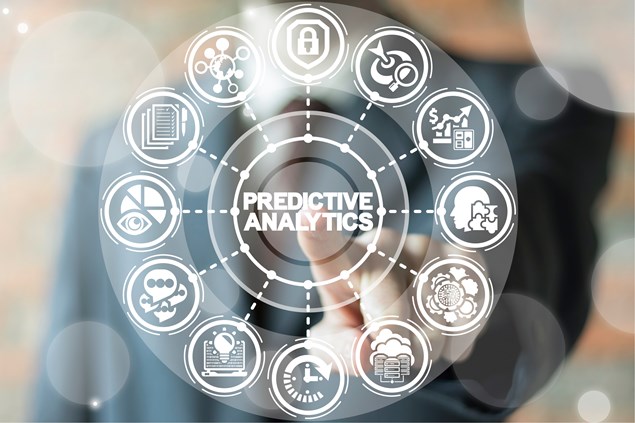
We can’t predict the future, however, the healthcare industry is working to address cost and utilization issues through predictive analytics. As defined by CIO Magazine, predictive analytics is a category of data analytics aimed at making predictions about future outcomes based on historical data and analytics techniques that can generate future insights with a significant degree of precision.
The healthcare industry has an increased need for advanced analytics which enable organizations to cost-effectively measure and improve outcomes and overall performance, enhance care coordination, improve care planning and management and reduce risks. As these organizations are inundated with increasing amounts of data, analytics give them actionable insight to improve quality of care, measure key performance indicators (KPIs), reduce operational costs, measure and track performance and increase patient safety.
A study from the Society of Actuaries found that 93 percent of health payers and providers believe predictive analytics is important to the future of their business. Approximately half of the study’s respondents reported using some type of technology for predictive analytics, and about 90 said they plan to use predictive analytics within the next five years.
Possible Obstacles
Although there are multiple benefits to utilizing predictive analytics in healthcare, there are some challenges to it. The biggest obstacles to using and implementing predictive analytics include incomplete data, lack of sufficient technology, processes/infrastructure and/or skilled employees, too much data, a limited budget and regulatory issues.
Available Applications
Here are a few examples of how predictive analytics are being used in various areas of healthcare.
Reduced Hospital Readmissions
Medicare beneficiaries with six or more chronic conditions have a readmission rate of 25 percent, compared to 9 percent for those with one or no chronic conditions. Predictive analytics utilizes customized models to help healthcare organizations determine historical patterns and predict future outcomes or trends to reduce hospital readmissions. They also can improve clinical quality and patient care by helping providers make more objective decisions including those related to patient safety, readmissions and clinical health outcomes.
Medication Management
By analyzing real-time data on medications and the way they’re used, clinicians can identify savings opportunities from drug costs, detect specific adverse drug reactions that are increasing costs and improve drug decision-making. Using data analytics helps achieve cost savings by focusing on drug pricing and utilization, better identifying drug interactions and addiction tendencies and reducing costs from adverse drug events resulting in hospital readmissions. It also assists in gauging appropriateness of use of certain drugs, achieving accurate and timely reporting and reducing or eliminating improper usage of drugs.
Chronic Disease Management
Healthcare analytics can utilize big data to identify patients with a high risk of chronic disease, resulting in the availability of more proactive intervention and treatment. Through the ability to combine, integrate and analyze large volumes of patient data from disparate systems, including EHRs, healthcare organizations can better manage high-risk patients, thereby reducing their overall cost of care.
Optimized Staffing
Staffing accounts for more than 50 percent of an average hospital's costs. Having a hospital that is understaffed can negatively affect patient outcomes and reduce patient satisfaction, while one that is overstaffed can experience decreased financial sustainability. By utilizing predictive analytics to forecast patient volumes, healthcare organizations are better able to utilize an appropriate number of staff members, resulting in reduced patient wait times and improved patient outcomes.
Employing predictive analytics for staffing benefits all departments of a hospital by enabling them to anticipate staffing needs while reducing overtime costs. More advanced predictive analytics solutions for staffing integrate data from multiple sources and use that data to gain actionable insight into patient wait times, demographics, nurse-to-patient ratios, trends and patterns and more.
Population Health Management
The growth of population health management is due primarily to the transition to value-based reimbursement. Having a proper population health management system in place enables healthcare organizations to more effectively stratify patients, identify risks and provide care to those who need it.
Population health management enables healthcare providers to use data for predictive analytics to offer insight into the health of specific populations, such as those with priority conditions, yield actionable information and develop a care plan accordingly. Once a provider identifies through analytics a certain population of people with diabetes, physicians treating those patients can determine a more streamlined care plan to reduce the likelihood of a relapse and help prevent the deterioration of those patients’ diabetes.
The Future of Predictive Analytics in Healthcare
The global predictive analytics market is forecast to grow to $9.2 billion by 2020. It’s expected to be increasingly utilized for cybersecurity initiatives, to supplement clinical trials and drug discovery techniques and to help forecast patient behaviors. Plus, it can help clinicians find out what kind of treatments work best for different individuals.
Further information on this topic can be found through the following resources:
- Harvard Business Review
- Society of Actuaries®
- Agency for Healthcare Research and Quality
- Association for Information Systems
- JMIR Medical Informatics
Contact us to learn more about the services we offer healthcare organizations of all types and sizes.
Sign up for Updates:
Privacy Details
By submitting this form, you are consenting to receive marketing emails from: Advanced Medical Reviews, LLC. You can revoke your consent to receive emails at any time by using the Unsubscribe link, found at the bottom of every email.
